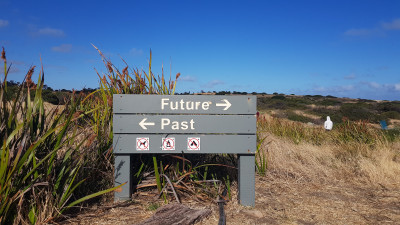Retros – looking back improves our future work
Published Jun 8, 2022, 9:18 AM
Written by Justin Matthies
We use retros at Symbiote to look at the past to help us to look ahead
What’s a retro?
At Symbiote we develop or improve our software using the Agile approach in which we form teams and follow a scrum framework. Stay with me. This means we work in short, time-boxed periods known as sprints. At the end of each sprint we schedule a retrospective (retro) session to discuss what happened and how we can use what we’ve learned to improve future sprints and the project as a whole.
I’ve seen other companies drop their retros because the teams are too busy. That’s a problem right there. If you can’t work out why the time-crunch happened and plan to avoid it happening in future, you’re probably headed for more of the same.
Have you heard the saying, ‘The way you do anything is the way you do everything’?
At Symbiote we do our retros with care and – though we’re very serious about our work – often with a lot of laughs. We care about our clients, we care about our projects, we care about our colleagues and we care about our company and its ability to run well.
It’s my job as scrum-master to set up the retros so they’re engaging and everyone feels safe. We all trust each other because we regularly meet in this way to talk about challenges as they come up. Everyone’s engaged and motivated to improve the way we work. Actions after the retro are essential. There’s no point in just talking. After a retro we’ll often have someone going off to do some research into a question, or write some documentation to help other team members solve problems, or come up with new processes altogether.

I make our retros different every time
I try to make the retros different every time, so we’re not just phoning it in (or video-calling it in). Since we’re all working from different locations now, we rarely have in-person retros where we can all make eye contact and see how everyone’s doing. That being said, we all get involved with chatting and interacting using video and collaborative tools before and during the retros.
From a client perspective, being part of our retros lets them see things improving, or where we’re running into challenges. This is far superior to old methods of working away in seclusion and presenting work to the client with a ‘ta-da’ unveiling – and then potentially finding out they had different ideas altogether.
There’s an element of self-care to retros as well. Our regular catch-ups give us all a chance to reflect on how we’re working and feeling. It’s not easy to tell your work colleagues how you feel, however so often someone will open up during a retro and other people will immediately chime in that they’re having the same thoughts or feelings.
We use retros to solve problems, reflect on what we do, and take care of our future selves
Every six months I collect feedback from previous retros and highlight a problem we had and how we solved it. For example, we had lots of a similar kind of defect coming up during one project. We fixed it. That kind of defect is incredibly rare now. It’s great to celebrate how far we’ve come.
We love retros so much at Symbiote that we did an end of year retro last December.
We all talked about the company and what worked and what didn’t during the year. The familiar structure of the format of a retro, and our feelings of trust after so many regular meetings using this format, made it easier for everyone to have their say and give feedback. There was something powerful about being part of a group where everyone was freely sharing ideas about improving things.
I see continuous improvement as another kind of care. It’s a kind of future caretaking. I’m very keen on writing documentation once a problem has been solved, so other people can find the answer easily. Just the other day, my own documentation, notes and screen grabs really saved the day – thanks, Past Me!
When Past Us, Present Us and Future Us are all working together, that’s got to be the true definition of the time-defying power of a retro.



